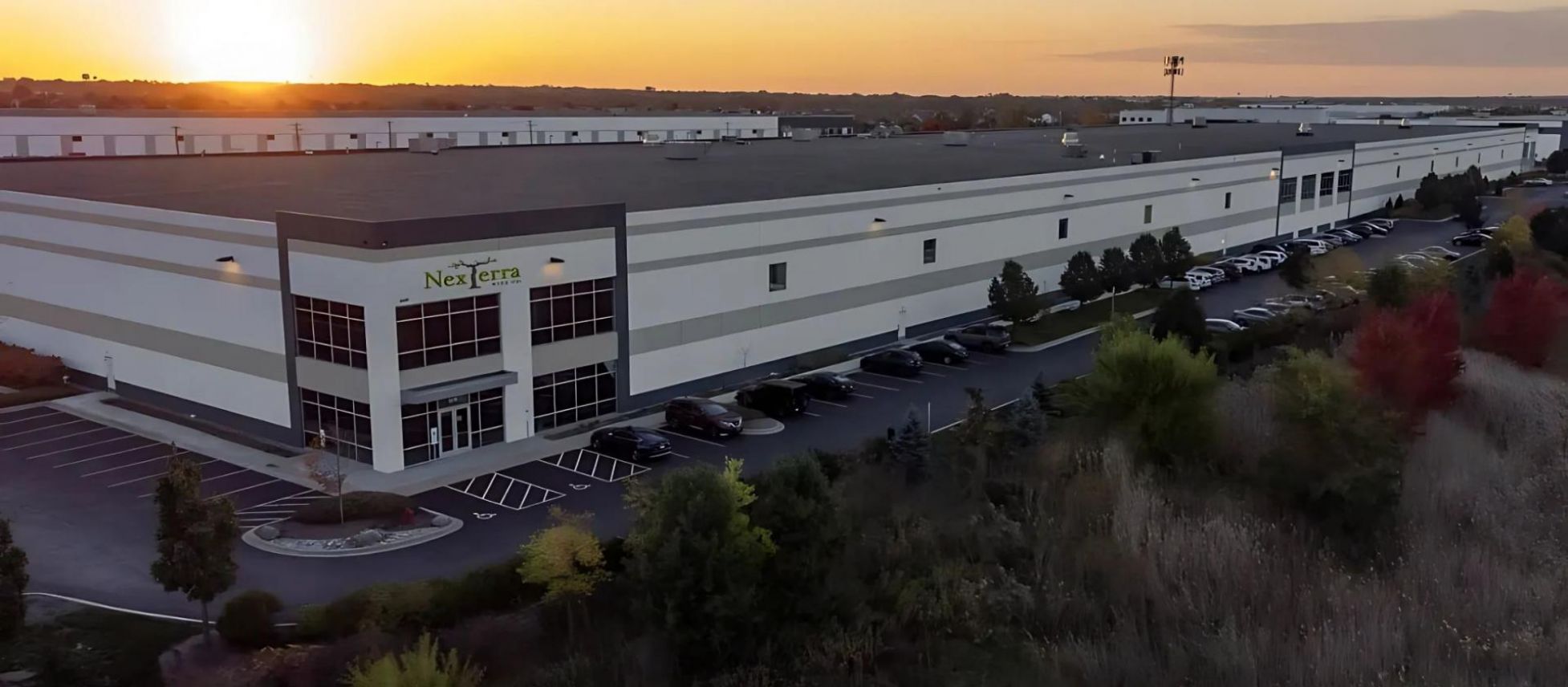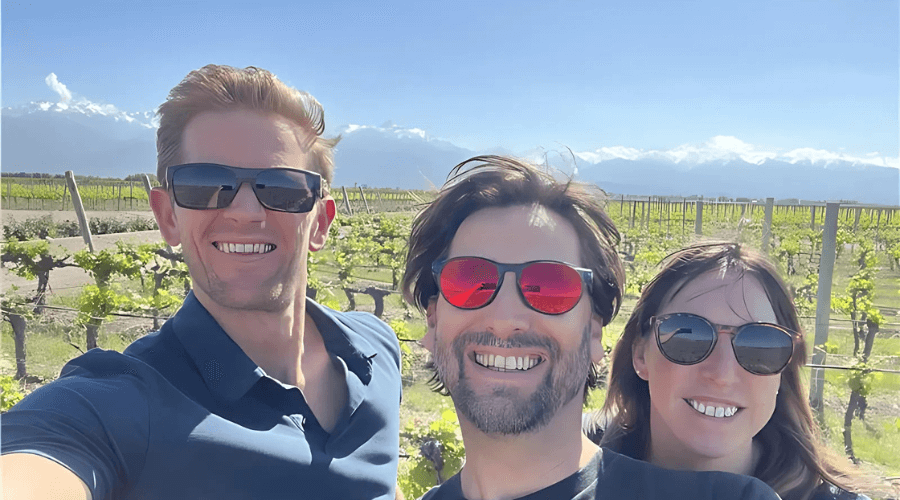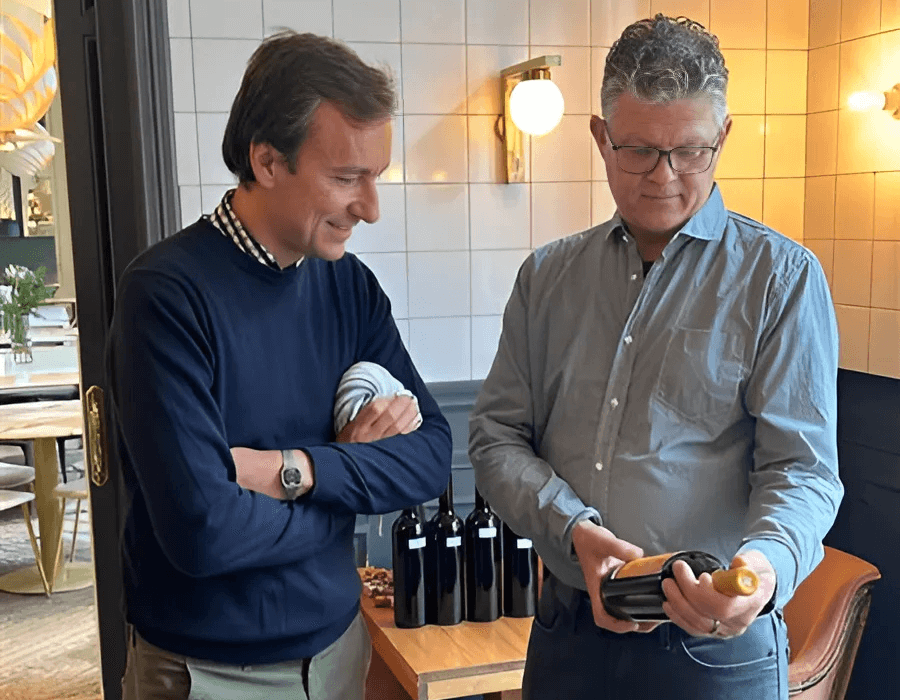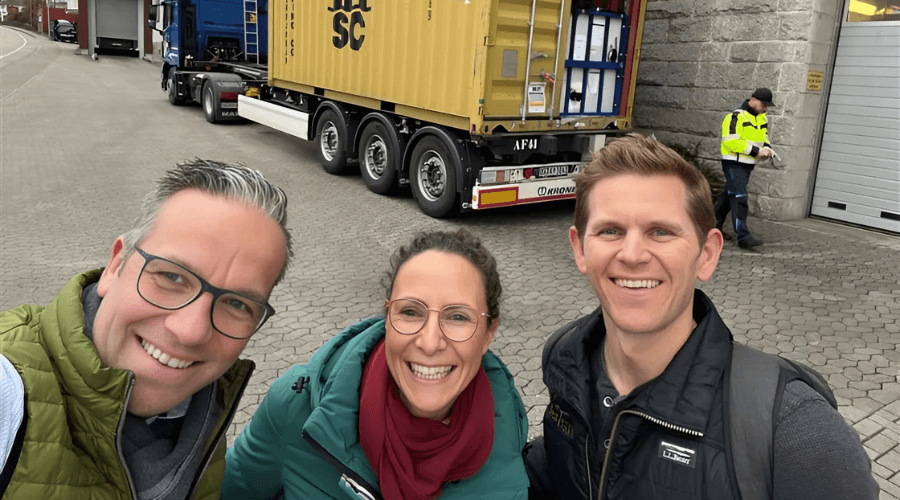Blog
Insights
Sourcing in a Shifting Market: A Conversation with Duncan Marks of NexTerra

The balance between value, flexibility, and long-term sourcing partnerships
The global bulk wine market is in a period of transition. While oversupply continues to weigh on some regions, economic pressures and climate volatility are tightening availability elsewhere. Buyers who once had their pick of competitively priced wine are now navigating a landscape shaped by inflation, shifting consumer preferences, and rising production costs.
As Global Wine Sourcing Manager at NexTerra, Duncan Marks has a front-row seat to these changes. His role involves working with producers across multiple continents—from California to Chile, France to Australia—to secure quality wines that align with evolving market needs. In this conversation, Marks sheds light on the biggest trends shaping bulk wine in 2025, the impact of tariffs and logistics costs on sourcing decisions, and how retailers and private label buyers are adjusting their strategies. He also discusses NexTerra’s approach to ensuring long-term supplier relationships, market adaptability, and how they are gearing up for trade in this evolving landscape.
The global bulk wine market is experiencing both opportunities and challenges, from oversupply in some regions to tightening availability in others due to economic pressures and climate volatility.
From your perspective, what are the biggest shifts in bulk wine availability and pricing in 2025? Are we moving toward a buyer’s or seller’s market, and what factors are driving this change?
Lately, the global market has seen increased trading, which is a positive indicator of reaching a balanced supply. However, the value of transactions is at unsustainable prices. We are keeping a close eye on the markets at a regional level as v24 Northern Hemisphere bulk availability becomes clearer, in tandem with v25 Southern Hemisphere harvest. The amount of vineyard removals/unpicked crop in 2025 will be a primary indicator for understanding where the 5–10-year market is truly headed.

Image: (L-R) Duncan Marks; Maneesha Khandelwal (COO) and David Patneaude (VP Winery Operations).
Regions like California, Chile, and Australia have been managing oversupply, while other areas are dealing with lower yields due to climate issues. How is NexTerra adjusting its sourcing strategy in response? Are you focusing on certain regions due to favorable pricing, or diversifying to mitigate risks?
Our Sourcing team travels globally to find the best opportunities for our customers: https://www.nexterrawine.com/stories. NexTerra has been able to leverage the quality: price ratio of opportunistic regions in larger non-appellated blends. At the same time, we have been able to tell the story of several global regions to bring market awareness and support, encouraging curiosity by the end consumer to branch out of their habitual purchases.
With inflation, rising production costs, and slowing consumer demand in key markets, pricing dynamics are shifting. How do you see bulk wine prices evolving in 2025, and what strategies are essential for buyers to remain competitive?
We take a simple approach to our Sourcing Program: We work with great partners. By approaching our partnerships with a long-term mindset, we can be honest, transparent, and forthcoming with our needs. Our suppliers respond by providing us with quality, flexibility, and fair pricing to ensure both parties can plan and operate for the foreseeable future.
As climate change continues to impact wine production, sourcing strategies need to be more adaptable. How does NexTerra ensure stability in supply despite climate-driven disruptions? Are you seeing any unexpected regions emerge as key suppliers?
We have not seen a dramatic enough impact to materially change our approach based on climate. Certain regions struggle with rainfall, frost, and heat, but that's an inherent risk of agriculture. We are keeping an eye on the rising costs of sourcing from particular regions, such as the EU, where ocean freight carriers are having significant carbon tax surcharges applied. The current EU and IMO initiatives will affect global trade prices for all commodities in the decades to come.

Image: Team Nexterra.
Retailers, private labels, and large-scale buyers are looking for both value and consistency in bulk wine. How are buyer expectations evolving? Are retailers and private label programs becoming more strategic in their sourcing, or are they still primarily focused on cost?
Buyers have become fully accustomed to having access to high-quality bulk wines at lower prices. A non-academic way of analyzing the market is looking at a sample set of 15-20 bulk wine opportunities from a given region. 5-to 7 years ago, half would be so flawed sensorily that you would rule them out before tasting them, and you might find 2 to 3 workable options. Today, 80-90% of listings are B/B+ quality.
Consistency in quality and pricing are the key drivers for buyers looking to fulfill multi-year sourcing initiatives. Cost will always matter; there's always a fire sale somewhere, but being able to rely on vendor partners for stable quality, pricing, and flexibility is invaluable.

Image: (Right) Greg Winter - Director of Winemaking with a co-worker.
Consumer preferences are shifting toward lighter styles, low-alcohol options, and alternative formats like kegs and cans. How are these trends affecting bulk wine-buying decisions? Are there specific styles or formats that are seeing increased demand?
Put simply, we are seeing an increase in requests for a wider range of ALL options. While no/low is of significant interest, higher alcohol wines are too. In general, the consumer marketplace is asking the wine industry to provide a breadth of styles, price points, and packaging. We feel this is a positive push for the wine industry to respond to, staying relevant to all generations and consumer demographics.
Traditional wine consumption is declining in some markets while emerging markets like parts of Africa and Asia are seeing growth. How is NexTerra navigating these shifts? Are you seeing new bulk wine buyers emerging from non-traditional markets?
NexTerra continues to provide vertically integrated solutions for all of our customers regardless of origin or request. By leveraging capabilities as an importer, blender/bottler, and logistics partner, we are committed to executing efficiently for any clientele we serve.

Image: Team Nexterra.
As we look toward the next three to five years, bulk wine sourcing will likely face further disruptions and innovations. How do you see the market evolving, and how is NexTerra positioning itself to stay ahead of industry shifts?
NexTerra is continuing to work with production partners on achieving the best quality wines possible without the traditional high-cost inputs of boutique winemaking. Similarly, we are working with logistics partners on the optimization of shipments and global transportation. Our mentality is to use every day as a learning opportunity so that when challenges arise, we are prepared to respond quickly and thoughtfully.
Conclusion:
As the bulk wine market evolves, the balance between value, consistency, and long-term partnerships is more critical than ever. Duncan Marks highlights that while pricing remains a key driver, quality has improved significantly, giving buyers more confidence in sourcing bulk wines across a broader range of regions. Regulatory changes, such as the EU’s carbon tax on shipping, and tariffs, are likely to have long-term implications for global trade, making adaptability essential.
Looking ahead, Marks sees both challenges and opportunities—from rising costs in traditional regions to growing demand for diverse styles and formats. NexTerra’s strategy remains focused on staying ahead of these shifts through strong supplier relationships, efficient logistics, and a deep understanding of market dynamics. In a rapidly changing industry, the ability to pivot while maintaining quality and reliability will be key to long-term success.
In conversation with Malvika Patel, Editor and VP, Beverage Trade Network
Also Read:
Emily Haines from Trinchero Family Estates on the Changing Landscape of Bulk Wine Sourcing
The Business of Bulk Wine: Insights from Ironstone Vineyards
Beyond the Label: How Mendocino’s Bulk Wines Shape California’s Finest Bottles
If you're a bulk wine or bulk spirits supplier, contract bottler, or private label producer aiming to connect with serious trade buyers, IBWSS San Francisco is the event you can't afford to miss. Get a quotation or Book a exhibitor table.

